Налаштування сервера для проєкту Bravo.
У данному випадку замовник мав бажання розмістити сервер у Росії. Це було пов'язано з тим, що люди в нього працювали з Росії, безпосередньо зі своїх кампутерів та через окремий RDP-логін, який я налаштував для них. Я взяв VDS з двома гігами пам'яті та додатковим окремим SSD-діском. На цьому VDS-сервері працює MySQL та кабінет для робітників цього замовника.

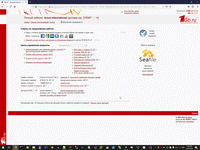
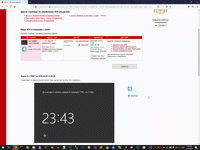
На скринах нище я ставлю у кабінет юзерів чергову версію моєї софтінки. Ця софтінка може ставитися й на кампутери юзерів, але передбачена можливість заходити з малопотужних та повільних кампутерів безпосередньо на сервер по RDP.
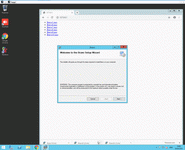
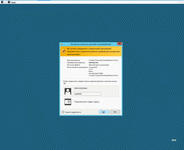
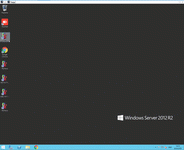

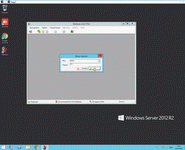
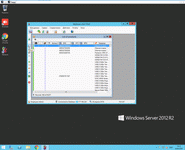
Зверніть увагу на третьому скрині вище, що було зручно розгортати увесь мій софт я додав у MSI-пакет усі необхідні залежності для роботи з MySQL за допомогою Entity Framework.

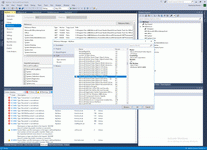
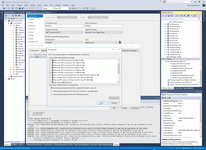
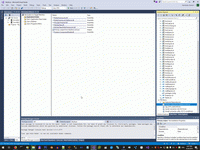
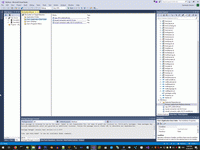
На цьому сервері у мене налаштований IIS з моїми сайтами.
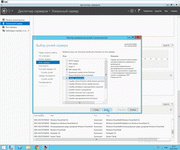
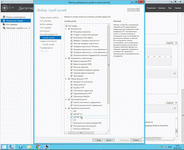
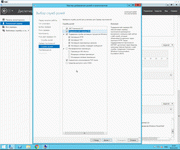
А ось власне панель MySQL.



Але головне, що працює на цьому сервері - це MySQL.
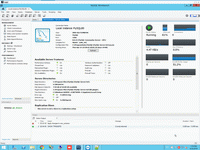
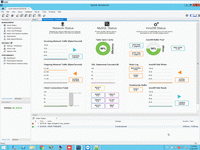
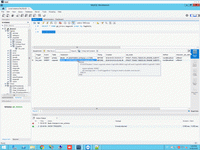
Сам по собі сервер та My.INI розташовані на диску C:\, а бази я розмістив на диску E:\
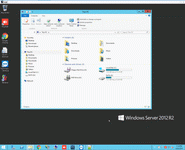
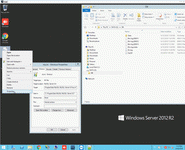
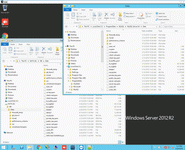
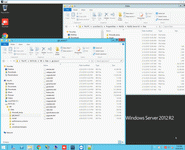
Головну увагу прі налаштуванні цього MySQL-серверу я приділяв різноманітним таймаутам та розміру пакету для спілкування з клієнтами.
1: # Other default tuning values
2: # MySQL Server Instance Configuration File
3: # ----------------------------------------------------------------------
4: # Generated by the MySQL Server Instance Configuration Wizard
5: #
6: #
7: # Installation Instructions
8: # ----------------------------------------------------------------------
9: #
10: # On Linux you can copy this file to /etc/my.cnf to set global options,
11: # mysql-data-dir/my.cnf to set server-specific options
12: # (@localstatedir@ for this installation) or to
13: # ~/.my.cnf to set user-specific options.
14: #
15: # On Windows you should keep this file in the installation directory
16: # of your server (e.g. C:\Program Files\MySQL\MySQL Server X.Y). To
17: # make sure the server reads the config file use the startup option
18: # "--defaults-file".
19: #
20: # To run the server from the command line, execute this in a
21: # command line shell, e.g.
22: # mysqld --defaults-file="C:\Program Files\MySQL\MySQL Server X.Y\my.ini"
23: #
24: # To install the server as a Windows service manually, execute this in a
25: # command line shell, e.g.
26: # mysqld --install MySQLXY --defaults-file="C:\Program Files\MySQL\MySQL Server X.Y\my.ini"
27: #
28: # And then execute this in a command line shell to start the server, e.g.
29: # net start MySQLXY
30: #
31: #
32: # Guidelines for editing this file
33: # ----------------------------------------------------------------------
34: #
35: # In this file, you can use all long options that the program supports.
36: # If you want to know the options a program supports, start the program
37: # with the "--help" option.
38: #
39: # More detailed information about the individual options can also be
40: # found in the manual.
41: #
42: # For advice on how to change settings please see
43: # https://dev.mysql.com/doc/refman/8.0/en/server-configuration-defaults.html
44: #
45: #
46: # CLIENT SECTION
47: # ----------------------------------------------------------------------
48: #
49: # The following options will be read by MySQL client applications.
50: # Note that only client applications shipped by MySQL are guaranteed
51: # to read this section. If you want your own MySQL client program to
52: # honor these values, you need to specify it as an option during the
53: # MySQL client library initialization.
54: #
55: [client]
56:
57: # pipe=
58:
59: # socket=MYSQL
60:
61: port=3306
62: interactive_timeout = 28800
63: interactive_timeout = 28800
64:
65: [mysql]
66: no-beep
67:
68: # default-character-set=
69:
70: # SERVER SECTION
71: # ----------------------------------------------------------------------
72: #
73: # The following options will be read by the MySQL Server. Make sure that
74: # you have installed the server correctly (see above) so it reads this
75: # file.
76: #
77: interactive_timeout = 28800
78: interactive_timeout = 28800
79: # server_type=2
80: [mysqld]
81:
82: # The next three options are mutually exclusive to SERVER_PORT below.
83: # skip-networking
84: # enable-named-pipe
85: # shared-memory
86:
87: # shared-memory-base-name=MYSQL
88:
89: # The Pipe the MySQL Server will use
90: # socket=MYSQL
91:
92: # The TCP/IP Port the MySQL Server will listen on
93: port=3306
94:
95: # Path to installation directory. All paths are usually resolved relative to this.
96: # basedir="C:/Program Files/MySQL/MySQL Server 8.0/"
97:
98: # Path to the database root
99: datadir=E:/DB/DATA
100:
101: # The default character set that will be used when a new schema or table is
102: # created and no character set is defined
103: # character-set-server=
104:
105: # The default authentication plugin to be used when connecting to the server
106: default_authentication_plugin=caching_sha2_password
107:
108: # The default storage engine that will be used when create new tables when
109: default-storage-engine=INNODB
110:
111: # Set the SQL mode to strict
112: sql-mode="STRICT_TRANS_TABLES,NO_ENGINE_SUBSTITUTION"
113:
114: # General and Slow logging.
115: log-output=FILE
116: general-log=0
117: general_log_file="WIN-OGLTGVN0FA0.log"
118: slow-query-log=1
119: slow_query_log_file="E:/DB/log.txt"
120: long_query_time=10
121:
122: # Binary Logging.
123: log-bin="E:/DB/Bin-log"
124:
125: # Error Logging.
126: log-error="E:/DB/Err.log"
127:
128: # Server Id.
129: server-id=1
130:
131: # Indicates how table and database names are stored on disk and used in MySQL.
132: # Value = 0: Table and database names are stored on disk using the lettercase specified in the
133: # CREATE TABLE or CREATE DATABASE statement. Name comparisons are case sensitive.
134: # You should not set this variable to 0 if you are running MySQL on a system that has
135: # case-insensitive file names (such as Windows or macOS).
136: # Value = 1: Table names are stored in lowercase on disk and name comparisons are not
137: # case-sensitive. MySQL converts all table names to lowercase on storage and lookup.
138: # This behavior also applies to database names and table aliases.
139: # Value = 3, Table and database names are stored on disk using the lettercase specified in the
140: # CREATE TABLE or CREATE DATABASE statement, but MySQL converts them to lowercase on
141: # lookup. Name comparisons are not case sensitive. This works only on file systems
142: # that are not case-sensitive! InnoDB table names and view names are stored in
143: # lowercase, as for Value = 1.
144: # NOTE: lower_case_table_names can only be configured when initializing the server.
145: # Changing the lower_case_table_names setting after the server is initialized is prohibited.
146: lower_case_table_names=1
147:
148: # Secure File Priv.
149: secure-file-priv="C:/ProgramData/MySQL/MySQL Server 8.0/Uploads"
150:
151: # The maximum amount of concurrent sessions the MySQL server will
152: # allow. One of these connections will be reserved for a user with
153: # SUPER privileges to allow the administrator to login even if the
154: # connection limit has been reached.
155: max_connections=1000
156:
157: # The number of open tables for all threads. Increasing this value
158: # increases the number of file descriptors that mysqld requires.
159: # Therefore you have to make sure to set the amount of open files
160: # allowed to at least 4096 in the variable "open-files-limit" in
161: # section [mysqld_safe]
162: table_open_cache=2000
163:
164: # Maximum size for internal (in-memory) temporary tables. If a table
165: # grows larger than this value, it is automatically converted to disk
166: # based table This limitation is for a single table. There can be many
167: # of them.
168: tmp_table_size=42M
169:
170: # How many threads we should keep in a cache for reuse. When a client
171: # disconnects, the client's threads are put in the cache if there aren't
172: # more than thread_cache_size threads from before. This greatly reduces
173: # the amount of thread creations needed if you have a lot of new
174: # connections. (Normally this doesn't give a notable performance
175: # improvement if you have a good thread implementation.)
176: thread_cache_size=10
177:
178: #*** MyISAM Specific options
179: # The maximum size of the temporary file MySQL is allowed to use while
180: # recreating the index (during REPAIR, ALTER TABLE or LOAD DATA INFILE.
181: # If the file-size would be bigger than this, the index will be created
182: # through the key cache (which is slower).
183: myisam_max_sort_file_size=100G
184:
185: # If the temporary file used for fast index creation would be bigger
186: # than using the key cache by the amount specified here, then prefer the
187: # key cache method. This is mainly used to force long character keys in
188: # large tables to use the slower key cache method to create the index.
189: myisam_sort_buffer_size=75M
190:
191: # Size of the Key Buffer, used to cache index blocks for MyISAM tables.
192: # Do not set it larger than 30% of your available memory, as some memory
193: # is also required by the OS to cache rows. Even if you're not using
194: # MyISAM tables, you should still set it to 8-64M as it will also be
195: # used for internal temporary disk tables.
196: key_buffer_size=8M
197:
198: # Size of the buffer used for doing full table scans of MyISAM tables.
199: # Allocated per thread, if a full scan is needed.
200: read_buffer_size=64K
201:
202: read_rnd_buffer_size=256K
203:
204: #*** INNODB Specific options ***
205: # innodb_data_home_dir=
206:
207: # Use this option if you have a MySQL server with InnoDB support enabled
208: # but you do not plan to use it. This will save memory and disk space
209: # and speed up some things.
210: # skip-innodb
211:
212: # If set to 1, InnoDB will flush (fsync) the transaction logs to the
213: # disk at each commit, which offers full ACID behavior. If you are
214: # willing to compromise this safety, and you are running small
215: # transactions, you may set this to 0 or 2 to reduce disk I/O to the
216: # logs. Value 0 means that the log is only written to the log file and
217: # the log file flushed to disk approximately once per second. Value 2
218: # means the log is written to the log file at each commit, but the log
219: # file is only flushed to disk approximately once per second.
220: innodb_flush_log_at_trx_commit=1
221:
222: # The size of the buffer InnoDB uses for buffering log data. As soon as
223: # it is full, InnoDB will have to flush it to disk. As it is flushed
224: # once per second anyway, it does not make sense to have it very large
225: # (even with long transactions).
226: innodb_log_buffer_size=1M
227:
228: # InnoDB, unlike MyISAM, uses a buffer pool to cache both indexes and
229: # row data. The bigger you set this the less disk I/O is needed to
230: # access data in tables. On a dedicated database server you may set this
231: # parameter up to 80% of the machine physical memory size. Do not set it
232: # too large, though, because competition of the physical memory may
233: # cause paging in the operating system. Note that on 32bit systems you
234: # might be limited to 2-3.5G of user level memory per process, so do not
235: # set it too high.
236: innodb_buffer_pool_size=8M
237:
238: # Size of each log file in a log group. You should set the combined size
239: # of log files to about 25%-100% of your buffer pool size to avoid
240: # unneeded buffer pool flush activity on log file overwrite. However,
241: # note that a larger logfile size will increase the time needed for the
242: # recovery process.
243: innodb_log_file_size=48M
244:
245: # Number of threads allowed inside the InnoDB kernel. The optimal value
246: # depends highly on the application, hardware as well as the OS
247: # scheduler properties. A too high value may lead to thread thrashing.
248: innodb_thread_concurrency=8
249:
250: # The increment size (in MB) for extending the size of an auto-extend InnoDB system tablespace file when it becomes full.
251: innodb_autoextend_increment=64
252:
253: # The number of regions that the InnoDB buffer pool is divided into.
254: # For systems with buffer pools in the multi-gigabyte range, dividing the buffer pool into separate instances can improve concurrency,
255: # by reducing contention as different threads read and write to cached pages.
256: innodb_buffer_pool_instances=8
257:
258: # Determines the number of threads that can enter InnoDB concurrently.
259: innodb_concurrency_tickets=5000
260:
261: # Specifies how long in milliseconds (ms) a block inserted into the old sublist must stay there after its first access before
262: # it can be moved to the new sublist.
263: innodb_old_blocks_time=1000
264:
265: # It specifies the maximum number of .ibd files that MySQL can keep open at one time. The minimum value is 10.
266: innodb_open_files=300
267:
268: # When this variable is enabled, InnoDB updates statistics during metadata statements.
269: innodb_stats_on_metadata=0
270:
271: # When innodb_file_per_table is enabled (the default in 5.6.6 and higher), InnoDB stores the data and indexes for each newly created table
272: # in a separate .ibd file, rather than in the system tablespace.
273: innodb_file_per_table=1
274:
275: # Use the following list of values: 0 for crc32, 1 for strict_crc32, 2 for innodb, 3 for strict_innodb, 4 for none, 5 for strict_none.
276: innodb_checksum_algorithm=0
277:
278: # The number of outstanding connection requests MySQL can have.
279: # This option is useful when the main MySQL thread gets many connection requests in a very short time.
280: # It then takes some time (although very little) for the main thread to check the connection and start a new thread.
281: # The back_log value indicates how many requests can be stacked during this short time before MySQL momentarily
282: # stops answering new requests.
283: # You need to increase this only if you expect a large number of connections in a short period of time.
284: back_log=80
285:
286: # If this is set to a nonzero value, all tables are closed every flush_time seconds to free up resources and
287: # synchronize unflushed data to disk.
288: # This option is best used only on systems with minimal resources.
289: flush_time=0
290:
291: # The minimum size of the buffer that is used for plain index scans, range index scans, and joins that do not use
292: # indexes and thus perform full table scans.
293: join_buffer_size=256K
294:
295: # The maximum size of one packet or any generated or intermediate string, or any parameter sent by the
296: # mysql_stmt_send_long_data() C API function.
297: max_allowed_packet=64M
298:
299: # If more than this many successive connection requests from a host are interrupted without a successful connection,
300: # the server blocks that host from performing further connections.
301: max_connect_errors=100
302:
303: # Changes the number of file descriptors available to mysqld.
304: # You should try increasing the value of this option if mysqld gives you the error "Too many open files".
305: open_files_limit=4161
306:
307: # If you see many sort_merge_passes per second in SHOW GLOBAL STATUS output, you can consider increasing the
308: # sort_buffer_size value to speed up ORDER BY or GROUP BY operations that cannot be improved with query optimization
309: # or improved indexing.
310: sort_buffer_size=256K
311:
312: # The number of table definitions (from .frm files) that can be stored in the definition cache.
313: # If you use a large number of tables, you can create a large table definition cache to speed up opening of tables.
314: # The table definition cache takes less space and does not use file descriptors, unlike the normal table cache.
315: # The minimum and default values are both 400.
316: table_definition_cache=1400
317:
318: # Specify the maximum size of a row-based binary log event, in bytes.
319: # Rows are grouped into events smaller than this size if possible. The value should be a multiple of 256.
320: binlog_row_event_max_size=8K
321:
322: # If the value of this variable is greater than 0, a replication slave synchronizes its master.info file to disk.
323: # (using fdatasync()) after every sync_master_info events.
324: sync_master_info=10000
325:
326: # If the value of this variable is greater than 0, the MySQL server synchronizes its relay log to disk.
327: # (using fdatasync()) after every sync_relay_log writes to the relay log.
328: sync_relay_log=10000
329:
330: # If the value of this variable is greater than 0, a replication slave synchronizes its relay-log.info file to disk.
331: # (using fdatasync()) after every sync_relay_log_info transactions.
332: sync_relay_log_info=10000
333:
334: # Load mysql plugins at start."plugin_x ; plugin_y".
335: # plugin_load
336:
337: # The TCP/IP Port the MySQL Server X Protocol will listen on.
338: loose_mysqlx_port=33060
339:
340: interactive_timeout = 28800
341: connect_timeout = 28800
342: net_write_timeout = 28800
343: net_read_timeout = 28800
344:
345:
346:
Cloud context:
 )
)
|
|